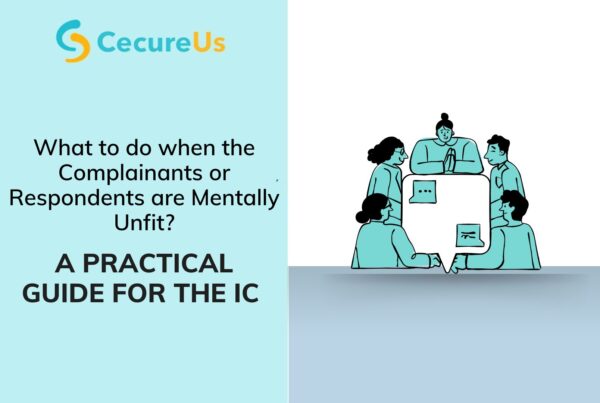
2020 brought many changes in all our lives. Working from home became the new normal, but as dynamic employees, we slowly eased into it by transforming our homes into offices. Two years after the pandemic’s onslaught, many continue the trend to work from the comfort and chaos of our home environments. The pandemic has showcased that working from home is a high priority for many employees than going to physical office spaces, more important than money for some.
In a Logitech survey, 42% of Australian workers preferred working from home over a pay rise. 64% said this also saved travel time to their workplaces, and they figured a better work-life balance. The cheer of the decrease of Covid cases globally is marginally shadowed by the small doubt and discomfort about going back to the office and working with large teams at the workplace. Employees need not lose sleep over this transition from their ‘zoom-to-bedroom’ workday to the brick-and-mortar workplace.
Soft skills and emotional intelligence are more pertinent now than ever in an enterprise, and there are workshops and programs to assist employees on this front. Organizations are gearing up to welcome their employees into offices with various Employee Assistance Programs in the workplaces.
Is there anything employees can do for a smooth transition to their workplaces? Yes, there are! Here is a list of easy-to-do things that would lessen their anxiety and help create a new normal for a healthy workplace.
- Communication is the key to overcoming the challenge of transition of workplaces effectively. Employees must share their concerns and fears with their Manager or colleagues for assistance. Voicing concerns reduces trepidation about the return to the workplace. Employees should ask the employers to resolve their queries about the office or cubicle assignment, breaks, asset sharing, parking, safety measures, etc. This would help them set their expectations straight. Employees must know that not everyone in the office will choose to be vaccinated and accept that. Finding out their office’s safety measures and employee assistance programs and giving themselves time to adjust through the guidance of these programs helps the transition. Communicating with the employer by openly seeking assistance is essential to building confidence and assuring employee comfort in the workplace. Employees must allow time to re-introduce themselves to the workplace and the new office hours.
- Employees must give themselves the time to get back into the grind that was once familiar to them. They must learn to be kind to other employees, as many may face the same or similar challenges, and respect their co-workers’ needs in the office. Not everyone may be delighted to be back in the workplace. Some employees may feel disconnected from their colleagues or have difficulty balancing responsibilities. Every employee must proactively acknowledge that their colleagues might be facing challenges in the workplace and genuinely ask them how they are feeling. “You seem stressed. Is everything okay?” is a kind way to ask, and if anything seems off, guide their colleagues towards employee assistance programs. A little support and recognition go a long way toward building mutual empathy and creating a healthy work environment in the workplace.
- Employees are bound to create practices to suit their needs. Their routine might have slipped in the lockdown as they were not expected to beat the rush hour traffic. Commute can be a stressful factor. Setting an earlier alarm and following the same schedule even on days they work from home helps add consistency and aligns their thoughts and actions towards returning to the workplace.
- Working with other employees would be a big part of the new routine. Employees may start by socialising with someone they usually work with or bond through voluntary programs at the workplace. This will encourage employees to ease into other aspects of their everyday routine. This process would be different for everyone; Employees may consider introducing a morning meditation to calm their minds of any anxieties. Listening to favourite tunes/podcasts and eating a fulfilling breakfast lets employees start the day the right way.
- Employees should learn to prioritise and set realistic expectations by being intentional of their time and energy. A return to the office may entail many meetings, networking events, and water cooler gatherings that initially seem jarring. To save themselves from the exhaustion of participating and being present everywhere, they must choose the activities, programs, and people they want to collaborate with. Accepting that stretching themselves thin would lead to quick burnout and helps employees ramp up their productivity game.
- Having worked from home for two years, employees have cultivated many innovative and productive ways of working. And they must carry some of these actionable ways into their workplaces. Many employees may have realized that working for 30 minutes and taking a 5-minute break boosted their energy levels. Or discovered that they work better in the mornings. Or even the periodic assessments through their employee assistance programs were beneficial. Transitioning these learnings into an office environment is the perfect place to start.
No matter their work-from-home workaround, every employee must have a conversation with a Manager to enable a smooth and productive transition. The reality may be that returning to a pre-pandemic way of working and workplaces isn’t the ideal setup for success. They must handle any stressful and challenging situation by exhibiting empathy and allyship so that the other parties tune their behaviour and attitude.
Are you an employee who is unsure how your employer can support your return to the office? Start the conversation now!
To know more about our Prevention of Sexual Harassment (PoSH), Diversity, Equity and Inclusion (D,E&I) and Employee Assistance Programs (EAP) solutions do write to us at connect@cecureus.com or call us at +91-7200500221.




